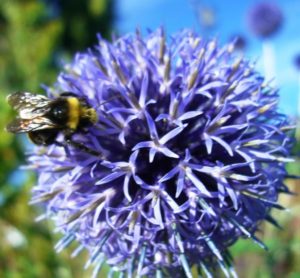[This article is from a talk I gave to members of the Olympic Club on September 1, 2016. I’ve added a few links and shared it here for members of the Olympic Club and the broader public. I’ve turned off comments but feel free to reach me via phone, email or social media.]
an 8 minute talk and an even quicker read
Everything begins as an idea, this talk, this Club, even The Rainier Club. They ALL started as ideas. But, ideas are not exclusive to any club. EVERYBODY gets ideas.
Some ideas will move forward and make an impact in people’s lives. Nine of us recently convened on an electric boat on Lake Union to celebrate Mr. Riddle’s 70th birthday. That too, started as an idea. The idea happened and I think it made a very positive impact for all involved.
While some ideas actually happen, other ideas remain trapped in our imaginations or become stalled, never to make an impact in the real world. I was curious about this. I had my own experiences, but I wanted to hear from others. While doing research for my first book, The Experience Design Blueprint, I asked people in all types of organizations why they thought ideas failed to gain traction.
Idea Mortal Enemy #1 – Lack of Clarity
The number one reason I heard for why ideas don’t move forward was “lack of clarity.” People simply didn’t know how to get started or what the next step was. What people really need is a clear path forward and a starting point – even a small step in the right direction. But, we have a poverty of language when discussing the movement of ideas. One of the things we need to understand about ideas is that – as they move from concept to completion – the people involved operate in three distinct psychological zones. Two of these zones we have some familiarity with, the third zone – not so much. The first psychological zone is the idea zone.
Idea Zone
This is the zone we are in when we generate ideas. The idea zone is home to sticky notes, pictures, envelopes and napkins, the whiteboard, and every other place we capture our ideas large or small, good or bad. We are all familiar with the idea zone.
Execution Zone
The other zone that we are familiar with is the execution zone. Here is where the calendar lives, and deadlines and our to-do lists. This is the mental zone for all items related to the discipline of execution. When you are reviewing the Olympic Club program schedule or other upcoming appointments, you are in the execution zone.
I’m going to pause here to take a quick poll? Who here considers themselves more of an idea person? Raise your hand. And who here considers themselves to be more of the execution police – that person that is mindful of the details, even holding others accountable? Yes, it’s the same result I see over and over; I usually find about a 50/50 mix when I take that poll.
Advancing Ideas IS the Challenge
The challenge is in going from the idea zone to the execution zone. Specifically, how do you advance an idea, especially when multiple people are involved? I’ve asked this question 100’s of times and I rarely receive good answers. This is a key area where the poverty of language is harmful to ideas.
Idea Buzz Kill
A board member once shared with me what she would tell other board members that approached her with an idea. She would say to them, “That is a perfectly good idea. Why don’t you come back to me when you have a fully executable plan?” What she didn’t realize at the time was that she was in the execution zone and the people approaching her with new ideas were in the idea zone. She was effectively shutting people down without realizing it. She was dismissing ideas outright, not on the merits of the ideas, but because of how and when those ideas were shared. They needed to have a different conversation. And, that leads us to the third psychological zone, the zone we are mostly blind to, the conversation zone.
The Conversation Zone – Seeing The Big Picture
The conversation zone is the place where we have authentic dialogue. In this mental state, alone or with others, we flesh out ideas enough to gain further understanding of the idea and why it matters. In this zone, we gain the perspectives of others that might sharpen and improve our ideas. In the conversation zone we get on the same page and build a simple plan that all can agree to. When we are in this zone we are trying to “see” the big picture. After creating the big picture we may realize the idea isn’t worth pursuing after all and that’s okay.
If you skip the conversation zone – by jumping directly to the execution zone you’re likely to burn precious time and resources. And, you’ll like hear these questions.
- What are we doing again?
- Why are we doing this?
- What’s the next step?
Overcoming Stuck a.k.a. Wandering in the Swamp
The conversation zone provides the clear path forward and addresses that #1 reason ideas don’t move forward – lack of clarity. Each of us moves in and out of the three psychological zones; so do those around us. That makes it especially challenging when working in groups. People are often in different zones but we don’t recognize it. There are no indicator lights or flags. Having a mental model for the three psychological zones is helpful. But establishing guiding principles for each zone adds to the care and feeding of ideas.
Guiding Principles for the Idea Zone:
- When you have an idea put it in the playground (that’s the name for the space where you capture ideas)
- Ideas can come from anywhere and at times inconvenient
- Ideas are not judged in the playground
Guiding Principles for the Conversation Zone:
- If you want to advance an idea, create a big picture
- An idea not implemented makes no impact
- Any idea can be broken down into big chunky steps along a implementation path
- Every idea should have a payoff
Guiding Principles for the Execution Zone:
- A task unclaimed is a task undone
- Inspiration has expiration, so it’s best to get started early
- Once you get started, it is easier to keep going
- Show visible progress to motivate yourself and others on the team
Recognizing the three psychological zones and referring to guiding principles for each zone can create smoother, more transparent behavior and more positive outcomes. It can also eliminate the drama and ill feelings that plague individual members within groups. Overcoming the poverty of language and normalizing productive behavior around ideas is a pathway to higher performance – as an individual and especially as a team.
One of the CEO’s I interviewed for my book wished that I had shared these guiding principles with him earlier. He recalled a time when he shut down an employee on a conference call when that employee suggested an idea. Rather than shutting him down, he later realized he should have said, “Sounds like a good idea. Put that in the playground and we’ll discuss it later.” Most ideas do arrive at inconvenient times. You know this firsthand.
Talking About the Movement of Ideas is Empowering
A client, a CEO of a software company, was frustrated because none of his employees shared ideas, although they interacted frequently. One of the first things we did when we began working together was to create a visible playground where ideas could live. Once we did that ideas flowed to it freely. The company entered new partnerships and created mobile and cloud versions of its software. Each of those ideas initially started as an idea written on sticky note and placed in the playground.
In Summary

Ideas are like food. They are better to be shared with others than left to deteriorate in isolation. Imagine if more ideas received the care and feeding they needed in order to move forward. Imagine that happened all across this city and in every city. Imagine people getting involved to nudge ideas forward; ideas that could make a big impact.
As I mentioned in my opening remarks, everything begins with an idea. Perhaps your next idea is right around the corner. Whenever it arrives and whether it is large or small, and whether you are working alone or with a team, I wish you much clarity and clear path forward. I hope your next idea fully takes flight – liftoff.
about the author
Gregory Olson’s latest book, L’ impossi preneurs: A Hopeful Journey Through Tomorrow, is a light-hearted and deadly serious book containing a couple of hundred ideas that if implemented would create a brighter future where we live more meaningful lives, governments invest in people and sustainable progress, and technology serves humans. Greg also authored The Experience Design Blueprint, a book about designing better experiences and then making them come true.
 Gregory Olson founded strategy and design firm Delightability, LLC. with the belief that if you delight customers then success will follow. He believes that we all have the potential to do better, as individuals, organizations, and communities, but sometimes we need a little help. Gregory also serves on the board of Oikocredit Northwest, a support association for social investor, Oikocredit International and the advisory board for Seattle University’s Department of Computer and Electrical Engineering.
Gregory Olson founded strategy and design firm Delightability, LLC. with the belief that if you delight customers then success will follow. He believes that we all have the potential to do better, as individuals, organizations, and communities, but sometimes we need a little help. Gregory also serves on the board of Oikocredit Northwest, a support association for social investor, Oikocredit International and the advisory board for Seattle University’s Department of Computer and Electrical Engineering.
 Greg is a business and marketing consultant who founded Delightability, LLC. with the belief that if you delight customers success will follow. He also believes that we all have the potential to do better, as individuals, organizations, and communities, but sometimes we need a little help. Gregory served as a volunteer board member for Oikocredit Northwest, a support association for social investor, Oikocredit International and as an advisor for Seattle University’s Department of Computer and Electrical Engineering.
Greg is a business and marketing consultant who founded Delightability, LLC. with the belief that if you delight customers success will follow. He also believes that we all have the potential to do better, as individuals, organizations, and communities, but sometimes we need a little help. Gregory served as a volunteer board member for Oikocredit Northwest, a support association for social investor, Oikocredit International and as an advisor for Seattle University’s Department of Computer and Electrical Engineering.



 Here is how it works in a bee colony. Each morning scout bees venture off in search of nectar, water, and better nesting grounds. This pursuit is necessary to sustain life for the colony. When a bee discovers a stash of nectar, water, or a great nesting site, it returns to the hive and performs a waggle dance. In this dance the energy exuded signals to the surrounding bees the value and direction of the treasure found. That way the bees know who to follow. This is a fully inclusive process. No scout bees returning to the nest are discriminated against for any reason.
Here is how it works in a bee colony. Each morning scout bees venture off in search of nectar, water, and better nesting grounds. This pursuit is necessary to sustain life for the colony. When a bee discovers a stash of nectar, water, or a great nesting site, it returns to the hive and performs a waggle dance. In this dance the energy exuded signals to the surrounding bees the value and direction of the treasure found. That way the bees know who to follow. This is a fully inclusive process. No scout bees returning to the nest are discriminated against for any reason. My second story is one of the most well-known and commercially successful examples of biomimicry. In 1941, Swiss engineer George de Mestral returned from a bird hunting trip in the Alps. He noticed his socks and his dog were littered with prickly seed burrs. While pulling off the burrs he noticed how easily they reattached. Mestral studied the burr needles under a microscope and discovered small hooks at the end that could easily attach to fur or socks. The burdock plant uses this feature to propagate its seeds through attachment. This gave him the idea of creating a hook and loop fastener. Mestral experimented for years and eventually perfected what we now know as Velcro.
My second story is one of the most well-known and commercially successful examples of biomimicry. In 1941, Swiss engineer George de Mestral returned from a bird hunting trip in the Alps. He noticed his socks and his dog were littered with prickly seed burrs. While pulling off the burrs he noticed how easily they reattached. Mestral studied the burr needles under a microscope and discovered small hooks at the end that could easily attach to fur or socks. The burdock plant uses this feature to propagate its seeds through attachment. This gave him the idea of creating a hook and loop fastener. Mestral experimented for years and eventually perfected what we now know as Velcro. When he viewed shark skin under an electron microscope, he saw that it was made up of countless overlapping scales called dermal denticles (or “little skin teeth”). The pattern reduces turbulence, making water pass by faster and the rough shape inhibits parasitic growth such as algae and barnacles. Technology inspired by shark skin has improved ship hulls and even swim suits. Scientists are now using the same technique to create films and surfaces that resist bacteria growth. This has many applications but perhaps the most important is in hospitals, given the ongoing problem with Hospital Acquired Infections and drug resistant bacteria.
When he viewed shark skin under an electron microscope, he saw that it was made up of countless overlapping scales called dermal denticles (or “little skin teeth”). The pattern reduces turbulence, making water pass by faster and the rough shape inhibits parasitic growth such as algae and barnacles. Technology inspired by shark skin has improved ship hulls and even swim suits. Scientists are now using the same technique to create films and surfaces that resist bacteria growth. This has many applications but perhaps the most important is in hospitals, given the ongoing problem with Hospital Acquired Infections and drug resistant bacteria. Our fourth lesson from nature comes from the Lotus flower. Leaves of the lotus flower and shark skin behave similarly. The flower’s micro-rough surface repels dust and dirt particles. If you were to look at a lotus leaf under a microscope, you would see what appear to be a tiny bed of nails. These nails prevent water droplets from adhering to the surface. When water rolls over a lotus leaf, it collects anything on the surface as it rolls off, leaving behind a clean and healthy leaf. This self-cleaning property is known as the Lotus Effect.
Our fourth lesson from nature comes from the Lotus flower. Leaves of the lotus flower and shark skin behave similarly. The flower’s micro-rough surface repels dust and dirt particles. If you were to look at a lotus leaf under a microscope, you would see what appear to be a tiny bed of nails. These nails prevent water droplets from adhering to the surface. When water rolls over a lotus leaf, it collects anything on the surface as it rolls off, leaving behind a clean and healthy leaf. This self-cleaning property is known as the Lotus Effect.

 Gregory Olson founded marketing strategy and design firm Delightability, LLC. with the belief that if you delight customers then success will follow. He believes that we all have the potential to do better, as individuals, organizations, and communities, but sometimes we need a little help. Gregory serves as a volunteer board member for
Gregory Olson founded marketing strategy and design firm Delightability, LLC. with the belief that if you delight customers then success will follow. He believes that we all have the potential to do better, as individuals, organizations, and communities, but sometimes we need a little help. Gregory serves as a volunteer board member for 



 Gregory Olson founded strategy and design firm Delightability, LLC. with the belief that if you delight customers then success will follow. He believes that we all have the potential to do better, as individuals, organizations, and communities, but sometimes we need a little help. Gregory also serves as a volunteer board member for
Gregory Olson founded strategy and design firm Delightability, LLC. with the belief that if you delight customers then success will follow. He believes that we all have the potential to do better, as individuals, organizations, and communities, but sometimes we need a little help. Gregory also serves as a volunteer board member for  No matter your title or role you are involved in customer experience. As a consumer yourself, sometimes you just want things to work. They don’t always need to be remarkable; they do need to be reliable, predictable, dependable, and above all unbroken.
No matter your title or role you are involved in customer experience. As a consumer yourself, sometimes you just want things to work. They don’t always need to be remarkable; they do need to be reliable, predictable, dependable, and above all unbroken.
 Your forethought is an insurance policy against broken experiences that your future customers may have. Treat the situation the same as if your customer were a child wandering toward traffic in a busy intersection. Of course, you’d intervene and help them out.
Your forethought is an insurance policy against broken experiences that your future customers may have. Treat the situation the same as if your customer were a child wandering toward traffic in a busy intersection. Of course, you’d intervene and help them out. Gregory Olson founded strategy and design firm Delightability, LLC. with the belief that if you delight customers then success will follow. He believes that we all have the potential to do better, as individuals, organizations, and communities, but sometimes we need a little help. Gregory also serves as a volunteer board member for
Gregory Olson founded strategy and design firm Delightability, LLC. with the belief that if you delight customers then success will follow. He believes that we all have the potential to do better, as individuals, organizations, and communities, but sometimes we need a little help. Gregory also serves as a volunteer board member for